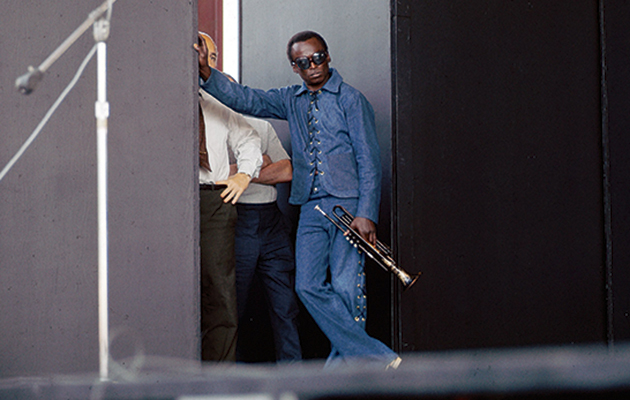Shares in Miles Davis’ career, had they been available, would not have fetched much of a price the day before he took the stage at the Newport Jazz Festival in the summer of 1955. Only a handful of years after his youthful blossoming alongside Charlie Parker and with his own innovative nine-piece ...
Shares in Miles Davis’ career, had they been available, would not have fetched much of a price the day before he took the stage at the Newport Jazz Festival in the summer of 1955. Only a handful of years after his youthful blossoming alongside Charlie Parker and with his own innovative nine-piece band, Davis’ playing and professional reputation had been badly damaged by the effects of heroin addiction. Now, clean for a year and a half, he pleaded with George Wein, the festival’s producer, for a place on the bill. Wein squeezed him in as a last-minute addition to a jam-session group featuring the saxophonists Zoot Sims and Gerry Mulligan, with Thelonious Monk on piano. Their short set, only three tunes and less than half an hour long, would change the trumpeter’s life.
He chose to wear a white tuxedo that made him stand out among the lounge suits flanking him on the stage, and he had clearly come to play. Taking the stage after the Count Basie orchestra, and introduced by Duke Ellington, he managed to negotiate Monk’s characteristically eccentric accompaniment on “Hackensack” with unruffled poise before taking charge on another of the pianist’s compositions, the classic ballad “Round Midnight”. Pushing the bell of his trumpet right up against the microphone, he cast a spell over the audience with an improvisation that showed off a confident new beauty in his tone and phrasing. The watching George Avakian, a powerful A&R man, made up his mind at that moment to sign Miles Davis to a Columbia Records contract that would see the trumpeter produce 20 years’ worth of classic albums, including Kind Of Blue, Sketches Of Spain and Bitches Brew.
Although the recording of Davis’ Newport debut has been released before, it is the only possible way to open the latest volume of the Bootleg Series, which consists of four discs devoted to the trumpeter’s appearances under the festival’s banner. Ranging from the original Rhode Island home to a temporary home in New York City and various Newport-branded European tours, the set covers a period of 20 years in which Davis’ music underwent a series of celebrated and sometimes controversial evolutionary leaps.
Three years after that first appearance, he returned with a sextet, featuring Cannonball Adderley and John Coltrane on saxophones, Bill Evans on piano, Paul Chambers on bass and Jimmy Cobb on drums, that would record Kind Of Blue a few months later. This six-tune set, particularly remarkable for the uncharacteristic explosiveness of Cobb’s usually imperturbable drumming, saw the light of day on a 2001 release, Miles Davis At Newport 1958. Unsurprisingly, the music continues to defy the opinion of DownBeat magazine’s disapproving critic, who wrote that “the group’s solidarity is hampered by the angry young tenor of Coltrane.”
The second disc is devoted entirely to two previously unreleased performances, in 1966 and 1967, by what is generally known as Miles’ second great quintet, but which deserves recognition as the most astounding small group in the history of jazz. Davis himself never received inspiration from his sidemen to equal that offered by Wayne Shorter, Herbie Hancock, Ron Carter and Tony Williams, whose five years together produced music of astonishing creative density, reaching peaks of collective transcendence in which they seemed to be able to bend metre, harmony and melody to their will, a kind of musical equivalent of gymnastics, acrobatics and ballet combined.
The problem of where to go next was solved when Davis’ girlfriend turned him on to Hendrix and Sly. He wanted to stay current and to share their audience, which meant a new funk-based groove and an interest in distortion. The 24-minute 1969 performance, with Miles alone in front of a new rhythm section (Chick Corea, Dave Holland, Jack DeJohnette) when Shorter got stuck in traffic, offers sanctuary in a halfway house, while a 70-minute set from a 1971 Newport concert in Switzerland, with Keith Jarrett on electric keyboards, Michael Henderson on bass guitar, Ndugu Leon Chancler on drums and two percussionists, shows a firmer commitment to the new sounds. In Berlin in 1973 and New York in 1975, the guitars of Pete Cosey and Reggie Lucas having replaced the keyboards, the transformation is complete. Time is squeezed and stretched in new ways, exotic timbres are distilled on the spot, and this free-form funk still scorches the air.
The History Of Rock – a brand new monthly magazine from the makers of Uncut – a brand new monthly magazine from the makers of Uncut – is now on sale in the UK. Click here for more details.
Uncut: the spiritual home of great rock music.



